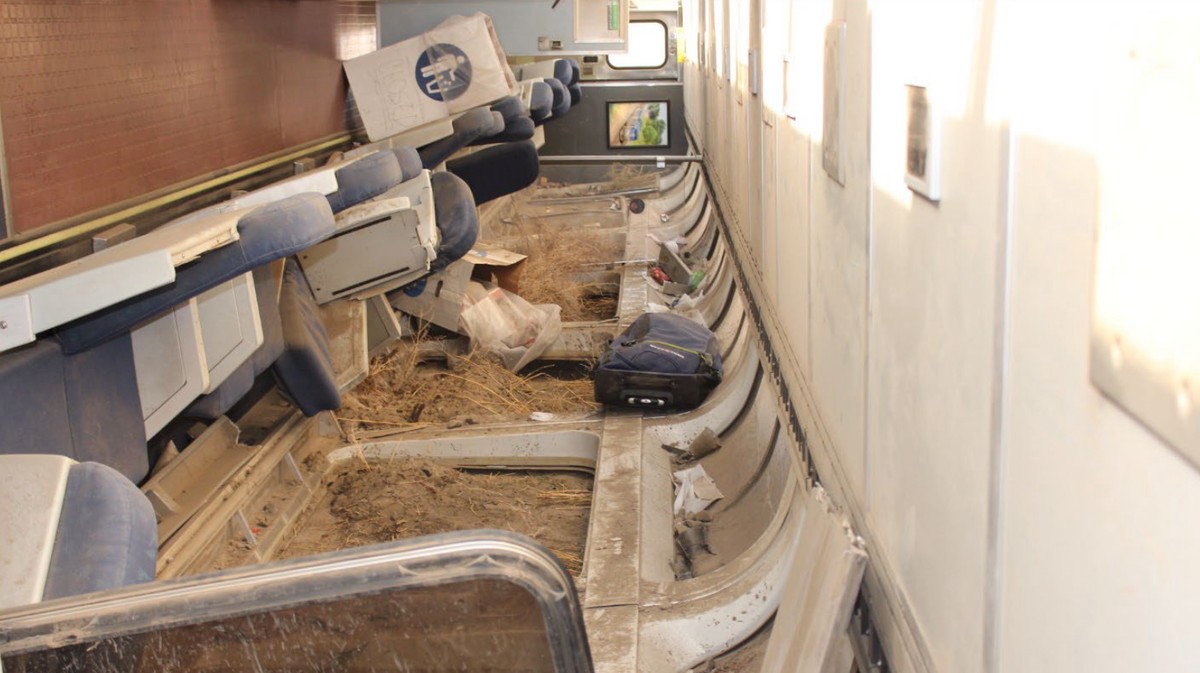
Moveable explores the future of transportation, infrastructure, energy, and cities.
Three people died in an Amtrak derailment in September 2021 because the freight rail company that owns the tracks did not properly maintain them, partly as a result of cost-cutting measures that slashed the track inspection workforce, according to a two-year government investigation.
The crash occurred after a Motherboard investigation earlier in the year that warned the freight rail industry was courting catastrophe by slashing maintenance and inspection programs to save on labor costs.
The report, which was published on Thursday by the National Transportation Safety Board, says the derailment of the Amtrak Empire Builder train in Joplin, Montana occurred because of “a combination of conditions that affected the BNSF Railway track” including worn rail and track misalignment. The report found the derailment could have been avoided if a track inspection, either by a computer system or a worker walking the track, had noticed the defect. Three of the 165 passengers on board died in the crash and 49 were injured.
Federal law requires tracks carrying regularly scheduled passenger trains to be inspected twice weekly. The worn track was inspected just two days prior to the derailment. But detecting unsafe tracks is a tricky, skilled job that requires a keen eye, attention to detail, and deep familiarity with the particular track segment. For example, this is what the misaligned track looked like:
Photo of the misaligned track. Credit: NTSB
According to the report, the inspector was overworked and responsible for too much track. In an interview investigators conducted three days after the crash, the track inspector said he had been “covering four positions most of the summer.” When asked how he managed the workload, he replied, “A lot of seven-day work weeks” and that he had been averaging 100 hours of work per week.
In the three days leading up to the inspection of the damaged track, the track inspector worked 16 hours, 12 hours 45 minutes, and 13 hours 30 minutes, respectively, for a total of more than 42 hours in three days. On the day of the track inspection, he was responsible for inspecting 126.8 miles of track. The NTSB concluded this workload “results in reduced performance proficiency.” The NTSB also found the inspector’s workload prevented him from doing a walking inspection of the route which would have “ensured an understanding of track conditions.”
The report also found the derailment might not have resulted in so many injuries or deaths if the Amtrak cars were designed better to prevent the windows from falling out.
Although the NTSB doesn’t have any regulatory authority, the report includes a number of recommendations to prevent a similar crash from happening in the future, such as equipping all trains with an autonomous track monitoring system to detect defects. The NTSB also reiterated recommendations it made eight years ago to the Federal Railroad Administration to set regulations around track conditions that could have prevented the derailment.
BNSF spokesperson Lena Kent told Motherboard in a statement that the company “has just received the final report” and that it is reviewing the findings but is “committed to safety across our system.” Kent said BNSF deploys “more than 4,000 trackside detectors” utilizing artificial intelligence to “produce vast amounts of data sets” to detect dangerous conditions and that BNSF has already begun installing the autonomous track monitoring system on existing locomotives.

